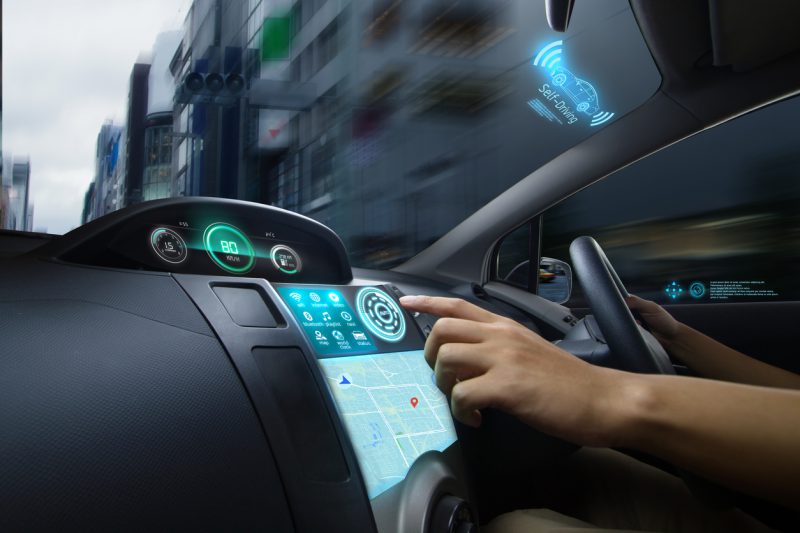
If you’re behind the wheel of a newish motor, driver distraction might be diverting your attention away from the business of driving.
Anything that potentially interferes in the driver’s relationship with the road can be hazardous. Latest Department for Transport figures for the UK show annually, driver distraction causes 3500 casualties.
These always used to be non-car related factors. They might have included advertising billboards, confusing road signs, children arguing in the back or map reading. But now experts believe cars are just as likely to be the cause of driver distraction. And top of the list of offenders are their sometimes confusing in-car infotainment systems.
How do cars distract you?
These days, touchscreens control an increasing number of our cars’ functions. Some cars have completely done away with the traditional buttons and knobs on the dashboard. In addition to programming the sat nav, the screen also controls the sound system, adjusting the volume, and the ventilation.

How do cars cause driver distraction?
Think tank the TRL believes the more ways that something engages a driver, the more brainpower it demands. And that means there’s less head space for the task of driving. It adds: “The impact of paying attention to something else while driving also depends on the duration of the distraction and how frequently it happens (i.e. the length of time for which the driver is exposed to the distractor).”
Studies from the US suggest any task forcing the individual to glance away from the road for two seconds or more, or 12 seconds in total should not be allowed.
Are some cars worse than others?
A recent study by What Car? had researchers conducting six basic tasks on 20 cars. These included turning up the cockpit temperature by 2 degrees, programming the sav nav, switching the radio station from Virgin Radio to BBC Radio 4 and using the steering wheel voice control to find the nearest service station. They then scored the cars out of five for each task (so a score of 30 for the best).
Worst was the MG ZS EV with its 8-inch touchscreen which scored 12. The Fiat 500X followed on 14. The Skoda Citigo, Peugeot 508SW and Lexus RX were also among the poorest performers. Best, with a score of 29 was the BMW 3 Series with Live Cockpit Professional.
What’s the answer?
Experts at thinktank the TRL believe there needs to be more research into driver distraction. It says: “We should aim for ‘attention testing’ akin to ‘emissions testing’ for personal, vehicle and roadside technologies. As with Euro NCAP standards for vehicle design, this would encourage the development of safer systems and improved HMI (Human Machine Interface).
“If you have a new technology you want to place somewhere in the road transport system, you will need to get it checked against what it does to the inside of drivers’ heads, not the fact that it can be used hands-free or set below a given level of luminance.”
In addition, legislators are currently working to create regulations around driver drowsiness and attention warning systems. These alert drivers when they’re too drowsy to continue driving safely or when something has diverted their attention. Research across Europe shows that driver fatigue can be a factor in around a fifth (20 per cent) of road crashes.
We’re supporting Highways England’s ‘Go Left’ campaign. If you break down on the motorway, remember to go left.

I agree that sat nav usage is extremely distracting for drivers even when it is offering good advice, never mind when it sends one up a blind alley. So why does the current driving test include sat nav driving?
On my ford kuga , to turn the heater on or off requires looking down for a small touch button . On old cars it could all be done by feel . Also to know if one is on main beam , means looking down for a blue light , on other cars I’ve had , I could tell by the position of the dip lever position in relation to the steering wheel if on dip or not . Do car designers actually drive the cars they design ?
I wonder how long it’ll be before all these variables are turned off once on the move and can only be adjusted once parked and the engine switched off? Are these distractions so different to using a mobile phone at the wheel?
TV and films are the worst offenders which show drivers interacting with their passenger eye ball to eye ball for many seconds whilst appearing to be driving the vehicle. It sends out the wrong signals to new/learner drivers.
I agree with all the above comments flush mounted buttons or those on screens all have to be searched for visually.
Voice activated controls remain unreliable at best, therefore a return to buttons which are proud of the surrounding facia that can be operated simply by touch would be a step in the right direction, automatic main beam dipping works well and can continue to do so.
I must say this news letter is very informative and far better and than most motoring magazines.